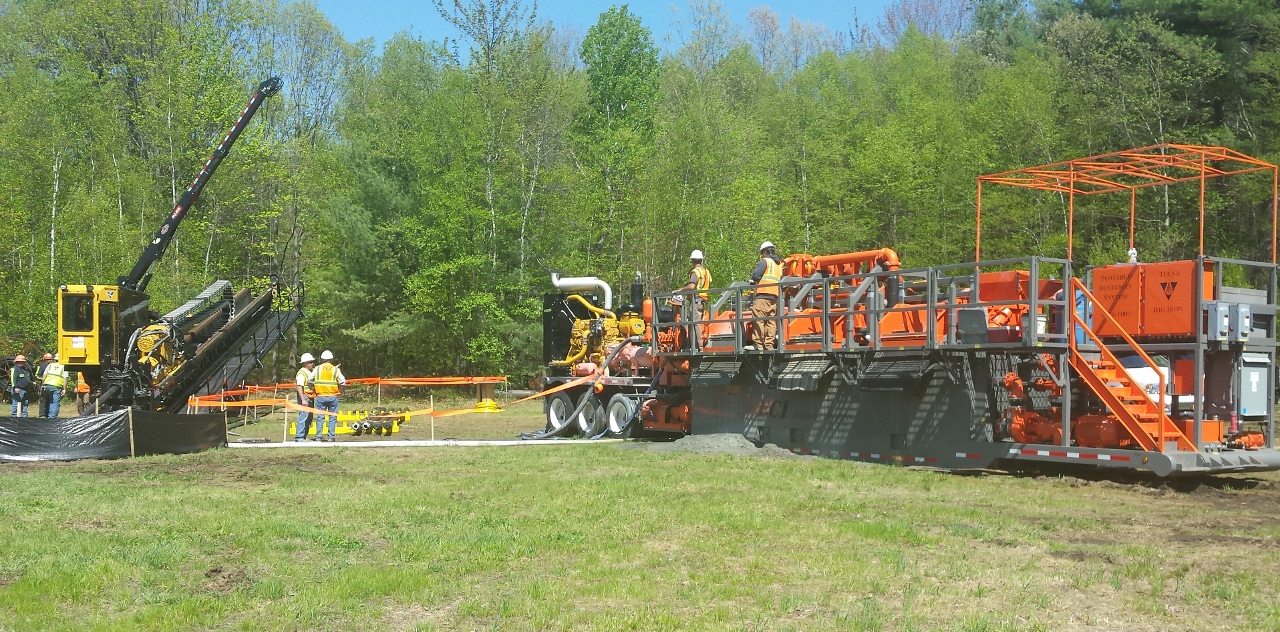HDD has transformed the landscape of utility installation. As a trenchless technology, it allows for the installation of pipes, cables, and other services beneath ground with little disturbance to the surrounding area. This new technique not only saves time and lowers costs but also addresses many of the challenges faced by traditional trenching techniques. In a world where urbanization is rapidly expanding and eco-friendly practices are at the forefront, understanding how HDD works and its many benefits is essential.
In this article, we will explore the nuances of HDD technology, from its basics to its uses in multiple projects. We will review the advantages it offers over standard techniques, delve into the future of trenchless technology, and showcase real-world success stories that illustrate the benefits of HDD. With an emphasis on safety, ecological effects, and productivity, this comprehensive guide is designed for individuals thinking about using HDD for their upcoming projects. Whether you are an expert in the field or simply interested about this cutting-edge method, you will find valuable insights that clarify the importance of HDD in the current construction landscape.
Grasping Lateral Horizontal Boring
Lateral Directional Drilling, or HDD, is a modern no-dig technology primarily used for the placement of subsurface utilities. This innovative method facilitates the placing of cables, conductors, and other utilities avoiding major trenching or excavation. By using a drilling rig, HDD forms a horizontal hole through the subsurface, following a predetermined track that reduces disturbance to the surface. This technique is particularly useful in metropolitan environments and sensitive zones where old-fashioned trenching practices would be challenging or environmentally harmful.
At the core of HDD is the methodology of boring a pilot bore along a specified track, generally using a boring bit that can maneuver through different ground types. Once the test hole is complete, an correctly sized pipe is pulled back through the bore. The flexibility of HDD facilitates complex maneuvering around pre-existing structures, shifting ground types, and other challenges that old-fashioned trenching cannot face as efficiently. The complete process is crafted to be economical, reducing the period and financial outlay associated with utility installation.
One of the notable characteristics of HDD is its capability to greatly reduce landscape impact. Unlike old-fashioned digging, which can cause significant surface rehabilitation efforts, HDD lessens the influence on landscaping, streets, and pre-existing services. By maintaining the integrity of the surface, HDD not only speeds up the setting process but also minimizes the risk of damage to nearby infrastructure and environments. This makes HDD an more and more preferred option for utility installations in both urban and remote locations. spintax
Advantages and Implementations of HDD
Horizontal Directional Drilling (HDD) offers many advantages that make it an progressively popular choice for various underground utility installations. One of the key benefits is the limited surface disruption it creates when measured against traditional trenching methods. This is notably advantageous in urban areas where ensuring traffic flow and reducing disruption to the public is a key concern. By using HDD, projects can be finished more swiftly with fewer impact on surrounding environments, maintaining landscapes and existing infrastructure.
Another significant advantage of HDD is its flexibility in application. It is frequently used for laying pipelines, water and sewer lines, fiber optic cables, and electrical conduits. Its ability to move around obstacles and navigate complex terrains allows for installations under rivers, roads, and even densely populated areas without the need for major excavations. This flexibility makes HDD a popular choice for multiple sectors, including communication, energy, and municipal infrastructure projects.
Additionally, HDD practices is continually evolving, incorporating advanced tools and techniques, which boosts its efficiency and accuracy. The integration of GPS technology and specialized drilling equipment allows for precise control over the drilling path, reducing the chances of costly mistakes. As industries increasingly seek green friendly solutions, HDD positions itself as a minimal-impact option that aligns with sustainable development goals, ensuring that projects are completed with minimal ecological footprints while still meeting the demand for additional infrastructure.
Challenges and Future Trends in HDD
Despite its numerous advantages, Horizontal Directional Drilling (HDD) faces several challenges that experts must navigate. One notable challenge is dealing with varying soil conditions, which can greatly influence drilling speed, trajectory, and equipment selection. In some cases, inconsistent or unexpected underground conditions, such as rock or highly saturated soils, can lead to increased costs and project delays. Additionally, ensuring proper environmental protection during conducting HDD operations requires meticulous planning and execution to avoid contamination and protect natural ecosystems.
In the future, advancements in technology are set to transform the HDD landscape. Horizontal Directional Drilling Ashbourne Ireland of GPS and real-time data analytics will enhance accuracy and efficiency, allowing for more precise adjustments during drilling. Furthermore, as municipalities and organizations seek sustainable solutions, the demand for HDD in renewable energy infrastructure projects will probably continue to grow. These technological innovations not only promise to optimize HDD processes but also improve safety protocols, minimizing hazards associated with complex drilling environments.
As the industry evolves, training and workforce development will become more important. Ensuring that teams are well-equipped with the latest knowledge and skills will be crucial for tackling the complexities of modern HDD projects. Moreover, regulatory frameworks will need to adapt to the rapidly growing use of HDD in fragile areas, balancing infrastructure development with environmental stewardship. Overall, the future of HDD holds great promise, defined by both its ability to tackle current challenges and its potential to pioneer in innovative trenchless technology solutions.

